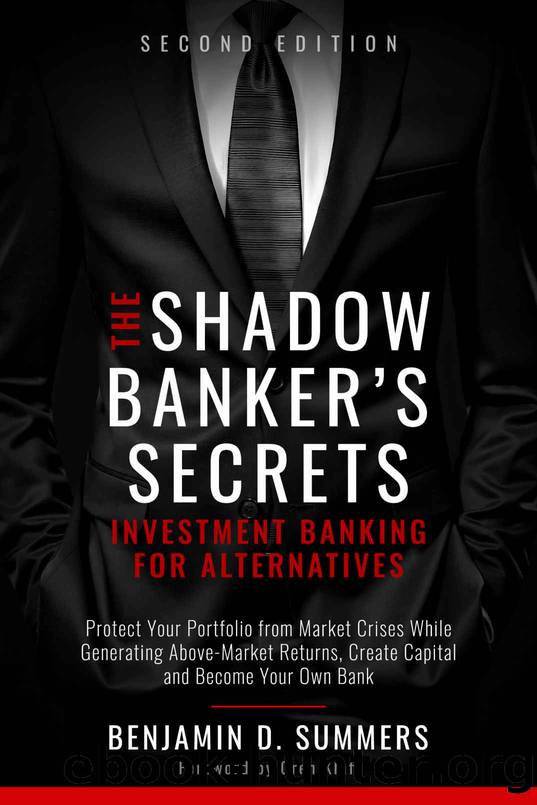The Shadow Banker's Secrets by Summers Benjamin

Author:Summers, Benjamin
Language: eng
Format: epub
Publisher: Best Seller Publishing, LLC
Published: 2022-11-15T00:00:00+00:00
The typical structure of a private equity fund.
In defense of the financial advisor communityâand as many will attestâprivate, or Reg D, funds have a pretty bad reputation in general. Most are poorly managed and donât execute their exit strategy. That being said, as we discussed earlier, the opportunity to generate substantial risk-adjusted performance can almost only be accomplished in the private fund space. So, how do we overcome financial advisorsâ perceptions about private offerings to give the quality private funds and sponsors that do exist an opportunity to be fairly evaluated by traditional financial distribution channels? Private fund sponsors have to put themselves in the shoes of the due diligence officers and financial advisors who are risking their business by offering their private fund.
Financial advisors are burdened by extraordinary regulatory constraint and potential legal liability that can result in the loss of a highly valuable client, or even their entire practice, if they recommend a bad private investment. This potentially catastrophic outcome is enough to close most financial advisors off to the Reg D space.
Publicly traded assets are at least ostensibly transparent as mandated by the SECâs registration and reporting process. Private funds are not subject to the same rigors and transparency mandates, which makes broker-dealers and RIAs particularly nervous about private offerings. As a matter of fact, the biggest objections financial advisors will typically cite for not recommending private funds to their clients is lack of transparency, but this is something that can be fairly easily rectified if you use a third-party fund administrator, issue quarterly financial reports, and have your fund audited annually by a nationally recognized accounting firm. This gives you, as a private fund manager, effectively equivalent transparency as your publicly traded counterparts with their 10-Qs and 10-Ks. Further, communicate in your two-pager and deck how your fund and capital structure are designed to match the liquidity and risk characteristics of the underlying assets and have a due diligence report issued by a reputable third-party firm to inspire confidence in your operational infrastructure and to verify the claims you make in your marketing and offering documents.
Another big objection financial advisors have about private funds is their lack of liquidity. It is true that this is a constraint that regulations make impossible to eliminate completely, but private fund managers should make every effort to minimize the duration of their lock-up period.
One means of accomplishing this is by using an interval fund structure, which is based upon maintaining a fairly large portion of the fundâs portfolio in relatively liquid assets to average down the necessary lock-up period as dictated by the most illiquid assets in the portfolio. Of course, great care must be given to this type of fund portfolio construction as the liquid assets could dramatically affect both the risk and return characteristics of the fund.
On the flip side, Iâll remind the financial advisors that FINRA expects you to advise any clients with near-term liquidity needsâas in less than a year or soâto be allocated in money markets.
Download
This site does not store any files on its server. We only index and link to content provided by other sites. Please contact the content providers to delete copyright contents if any and email us, we'll remove relevant links or contents immediately.
| Corporate Finance | Crowdfunding |
| Financial Engineering | Financial Risk Management |
| Wealth Management |
The Black Swan by Nassim Nicholas Taleb(7063)
Bad Blood by John Carreyrou(6584)
Pioneering Portfolio Management by David F. Swensen(6261)
Millionaire: The Philanderer, Gambler, and Duelist Who Invented Modern Finance by Janet Gleeson(4425)
Skin in the Game by Nassim Nicholas Taleb(4206)
Bullshit Jobs by David Graeber(4143)
The Money Culture by Michael Lewis(4138)
Skin in the Game: Hidden Asymmetries in Daily Life by Nassim Nicholas Taleb(3962)
The Wisdom of Finance by Mihir Desai(3698)
Blockchain Basics by Daniel Drescher(3544)
Liar's Poker by Michael Lewis(3416)
Fooled by Randomness: The Hidden Role of Chance in Life and in the Markets by Nassim Nicholas Taleb(3083)
Hands-On Machine Learning for Algorithmic Trading by Stefan Jansen(3049)
Mastering Bitcoin: Programming the Open Blockchain by Andreas M. Antonopoulos(3015)
The Intelligent Investor by Benjamin Graham Jason Zweig(3014)
The Power of Broke by Daymond John(2936)
Investing For Dummies by Eric Tyson(2923)
Market Wizards by Jack D. Schwager(2673)
Zero Hour by Harry S. Dent Jr. & Andrew Pancholi(2632)
